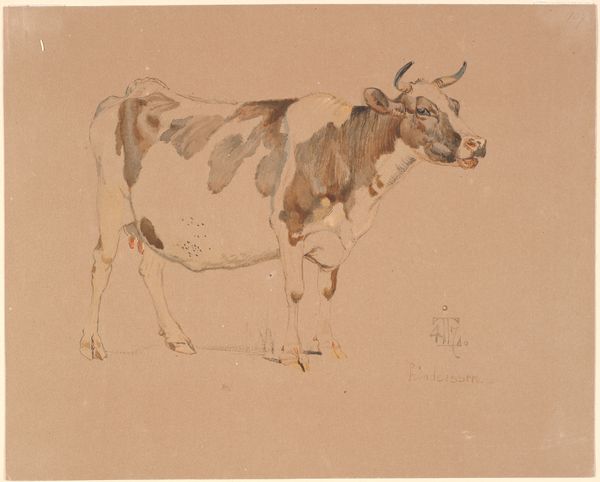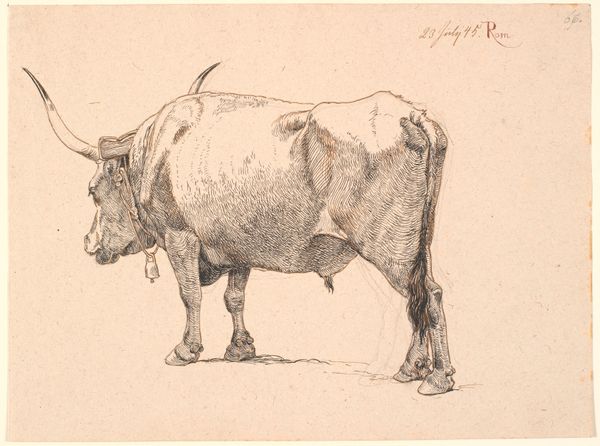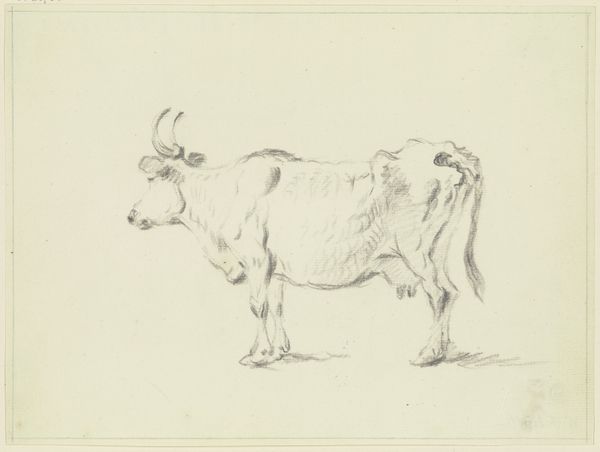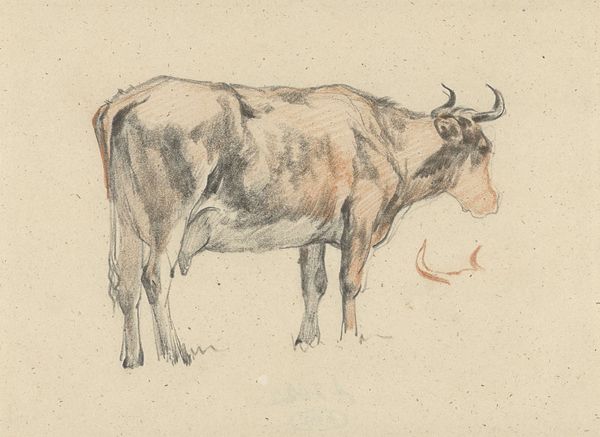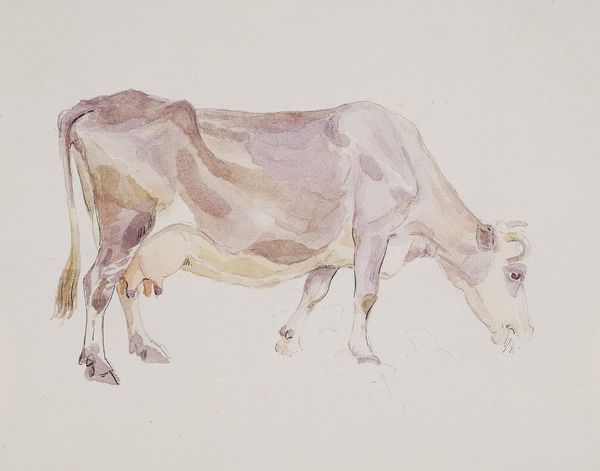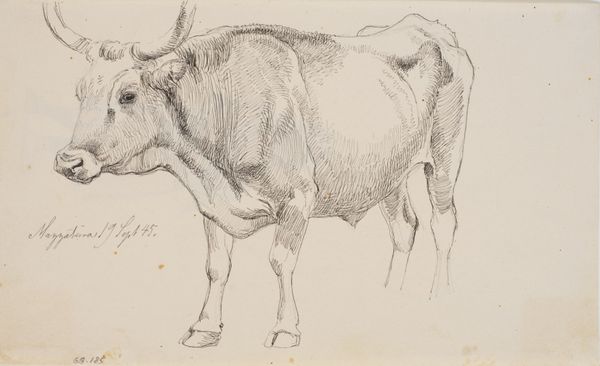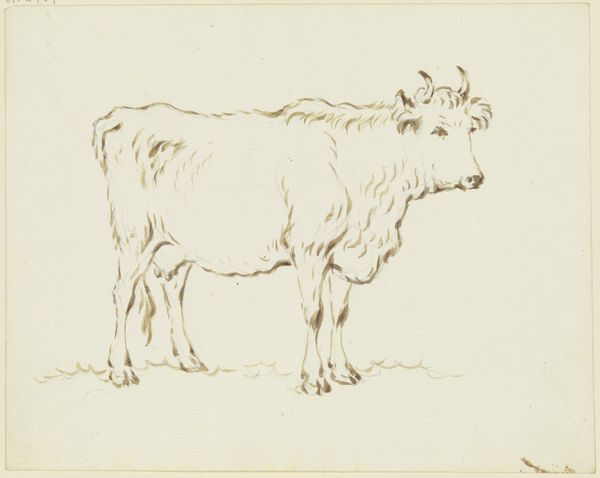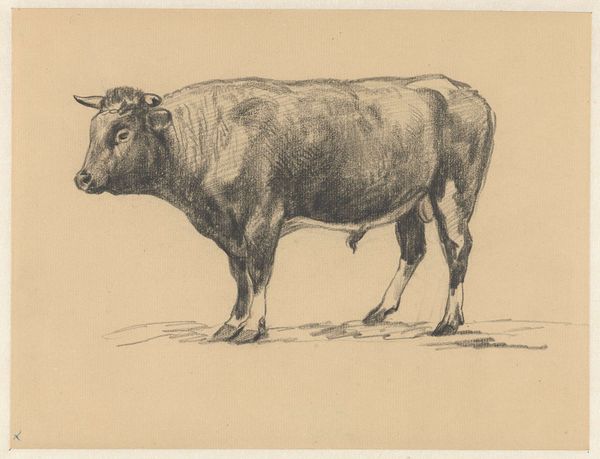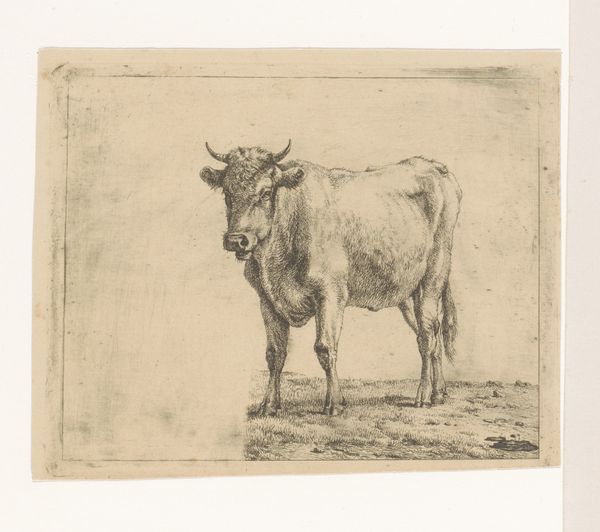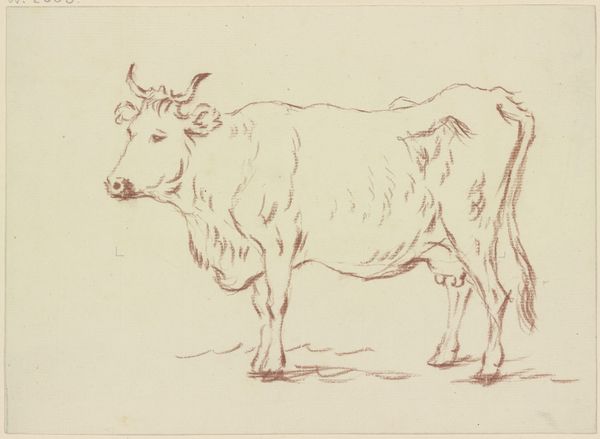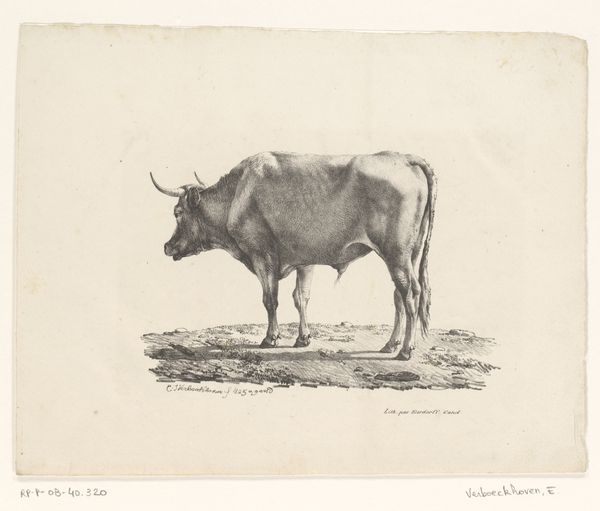
Stående rødbroget tyr, vendt mod venstre, set skråt bag-fra 1844
0:00
0:00
drawing, watercolor, pencil
#
portrait
#
drawing
#
pencil sketch
#
landscape
#
figuration
#
watercolor
#
pencil drawing
#
romanticism
#
pencil
#
watercolour illustration
#
watercolor
#
realism
Dimensions: 271 mm (height) x 328 mm (width) (bladmaal)
Curator: This work is "Standing Red-and-White Bull, Facing Left, Seen Diagonally From Behind" by Johan Thomas Lundbye, dating from 1844. It's held here at the SMK, Statens Museum for Kunst. Editor: My initial feeling? Solid. I mean, it’s just… bovine. Humble and strong, I can almost smell the hay and hear the lazy buzz of summer flies. And that earthy palette feels right, you know? Rooted. Curator: Lundbye was deeply invested in depicting the Danish landscape and rural life accurately. The focus here isn't on idealizing nature, as was the fashion in some circles. Instead, he presents an honest, almost documentary-like, view of agricultural animals. Consider the social and economic role of cattle during that time; Lundbye reflects their centrality to Danish society. Editor: Documentary, maybe, but with a definite wink. Look at the delicacy of the pencil work – it’s almost absurdly fine for a bull! It's like dressing a farmhand in silk stockings. Does that suggest something, beyond simple observation? Like a certain affection or respect? Or a subversive intent even? Curator: Subversive? I'm not sure I’d go that far. But Lundbye's attention to detail definitely elevates the subject. Remember, Realism was emerging then as an artistic movement, and valuing everyday subjects over grand historical themes. Editor: I see it too! I notice how the light catches the curve of his back, the way the tail flicks as if shooing away unseen tormentors…It's… personal, like Lundbye spent time with this particular bull, saw beyond the beast to the… bovine soul, if there is such a thing? I like to imagine that the soul of an artist reflects that, you see. Curator: Indeed. I believe it reflects Lundbye’s dedication to Danish identity through the lens of agrarian life, capturing the bull not just as livestock but as a symbol of national heritage. The art becomes, therefore, almost a social study. Editor: Ah, but maybe that's the beauty of it! How we can both see different layers, appreciate the craftsmanship and dive deep into its potential meaning... It certainly is special to capture not just how he looks but, also, how it *feels* to be next to this majestic creature! Curator: I agree. Seeing the layers beyond the surface reveals the intersection of nature, culture, and society, making us ponder our place in the world.
Comments
No comments
Be the first to comment and join the conversation on the ultimate creative platform.
